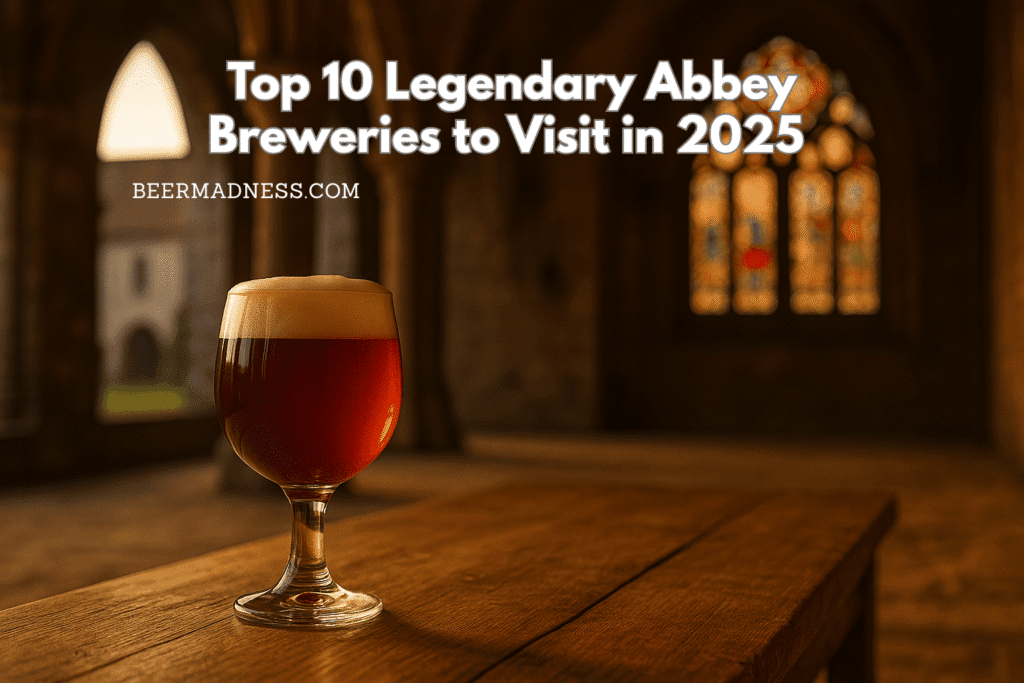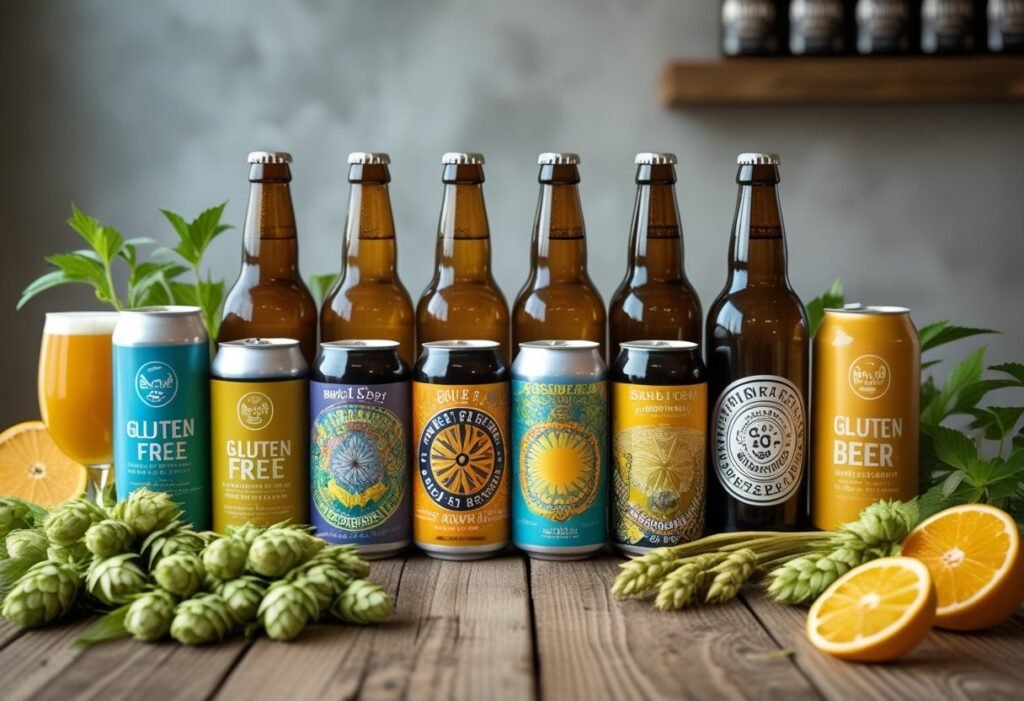Few traditions in the beer world are as captivating as abbey brewing. For centuries, monks have brewed beer not simply as a drink, but as a livelihood and spiritual practice. Originating in medieval Europe, monasteries became centers of brewing excellence, refining recipes, cultivating yeast strains, and perfecting brewing techniques that would influence the craft for generations to come. The beers produced behind cloister walls weren’t only for sustenance — they carried cultural and religious significance, becoming symbols of hospitality and devotion.
Fast forward to 2025, and the allure of monastic beers remains stronger than ever. While the craft beer movement has exploded with innovative styles, few experiences rival the authenticity of sipping a Trappist ale brewed by monks who have upheld centuries-old traditions. These breweries stand apart because they offer more than beer — they offer a journey into history, culture, and craftsmanship. Travelers seek them out not only to enjoy world-class ales but also to immerse themselves in serene abbey settings and taste flavors that have stood the test of time.
This guide explores the top 10 legendary abbey breweries to visit in 2025, from iconic Belgian monasteries like Westvleteren and Chimay to modern gems such as Spencer in the USA and Tynt Meadow in the UK. Each abbey has its own story to tell — from secretive brewing methods and globally celebrated ales to unique visitor experiences.
Whether you’re planning a beer pilgrimage through Europe, a cultural journey to historic abbeys, or simply want to deepen your appreciation of authentic monastic brewing, this list will inspire your next adventure. Grab a chalice glass, settle in, and let’s explore the abbey breweries every beer lover should know in 2025.
This post may contain affiliate links. If you click and purchase, I may receive a small commission at no extra cost to you. Learn more
What Makes an Abbey Brewery Legendary?
When people speak of legendary abbey breweries, they often imagine quiet monasteries where monks patiently tend to copper kettles, brewing ales according to centuries-old traditions. But what truly sets these breweries apart from thousands of modern craft beer producers? Several key elements define the legendary status of an abbey brewery.
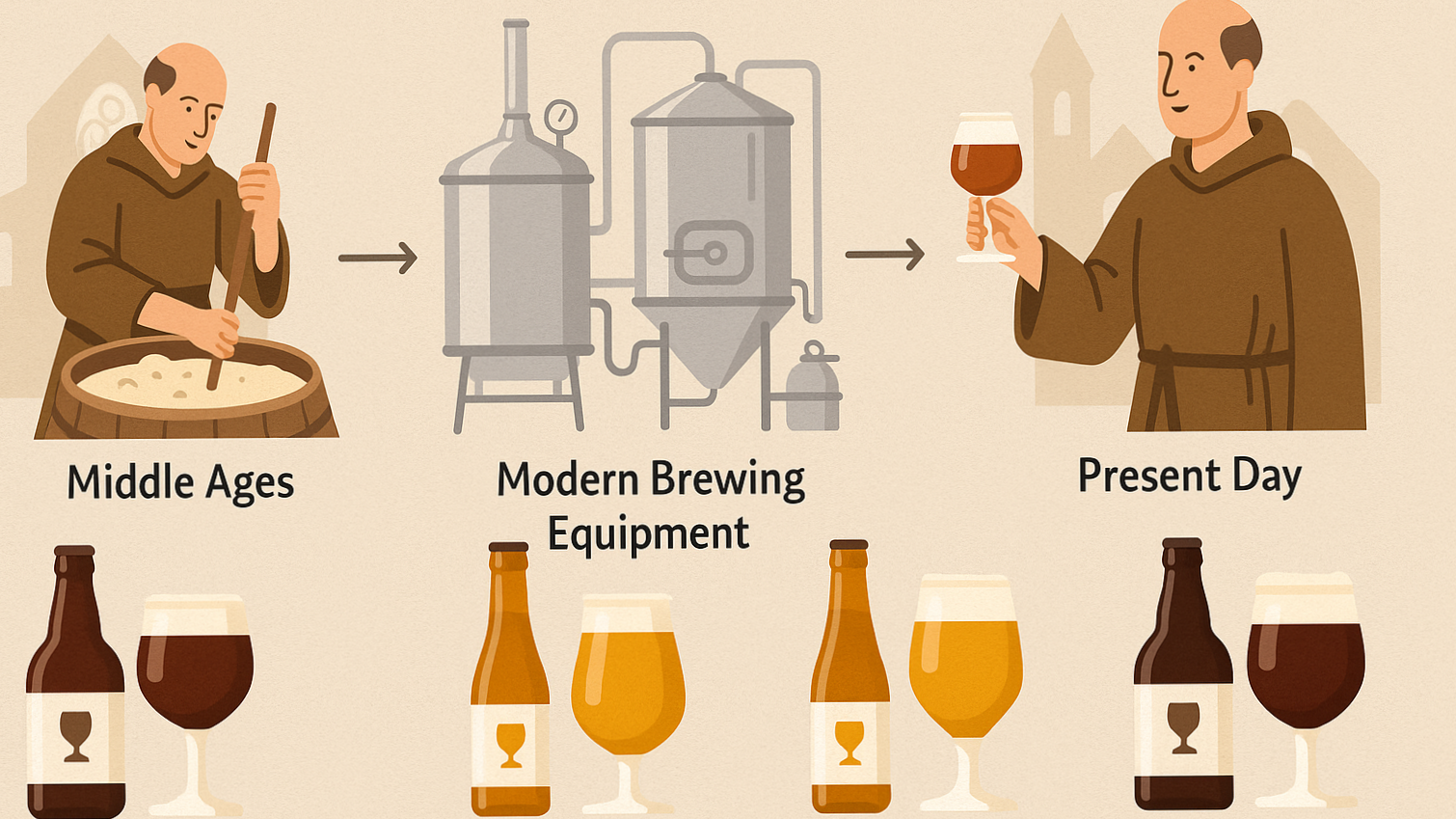
1. Deep Historical Roots
Many abbey breweries trace their origins back to the Middle Ages, when monasteries brewed beer to sustain their communities, fund charitable work, and provide a safe alternative to often-contaminated water. Some, like Westmalle or Orval, have brewed continuously for centuries, while others, such as Tynt Meadow in the UK, are recent additions continuing the tradition. This link to history creates an aura of authenticity that few breweries outside monastic walls can match.
2. Spiritual Connection
Unlike commercial breweries driven purely by profit, monastic brewing is grounded in religious values. Trappist monasteries, for example, follow the Rule of St. Benedict: “Ora et Labora” (“Pray and Work”). Brewing is part of the monks’ daily rhythm, with profits supporting the abbey’s upkeep and charitable causes. For visitors, this spiritual connection makes enjoying an abbey beer feel like participating in a living tradition.
3. Unique Beer Styles and Techniques
Abbey breweries are known for distinctive beer styles, many of which have become global benchmarks:
- Tripel – invented at Westmalle, golden, strong, and spicy.
- Dubbel – dark, malty, and rich, often with dried-fruit notes.
- Quadrupel – pioneered at La Trappe, intensely strong and complex.
- Orval’s Brettanomyces-fermented pale ale – one of the most unique beers in the world.
These beers are often bottle-conditioned, meaning they continue to ferment in the bottle, creating remarkable depth and aging potential.
4. Strict Quality Standards
Abbey beers — especially those labeled Authentic Trappist Product (ATP) — must meet strict requirements. To carry the ATP seal, the beer must be brewed within the walls of a Trappist monastery, under monastic supervision, and with profits directed toward sustaining the abbey and charitable works. This level of oversight ensures that every bottle represents uncompromising quality and authenticity.
5. Cultural and Touristic Appeal
Visiting an abbey brewery isn’t just about drinking great beer — it’s about immersing yourself in history and culture. Many abbeys feature stunning architecture, serene gardens, and peaceful chapels. Some, like Chimay and La Trappe, also offer visitor centers, guided tours, and cheese pairings, making them perfect stops for beer tourism. Others, like Westvleteren, remain famously difficult to access, adding to their mystique.
6. Authenticity in a Modern Beer World
In an era of flashy IPAs and experimental sours, abbey breweries remain steadfastly authentic. Their beers may not always chase trends, but they consistently deliver timeless quality. For beer lovers, that reliability — combined with centuries of tradition — is precisely what makes these breweries legendary.
What Defines a Legendary Abbey Brewery?
- Centuries-old monastic heritage.
- Brewing rooted in spiritual and charitable values.
- Iconic beer styles (Tripel, Dubbel, Quadrupel).
- Strict Trappist or abbey authenticity standards.
- Unique cultural and tourist experiences.
- Timeless quality in a changing beer world.
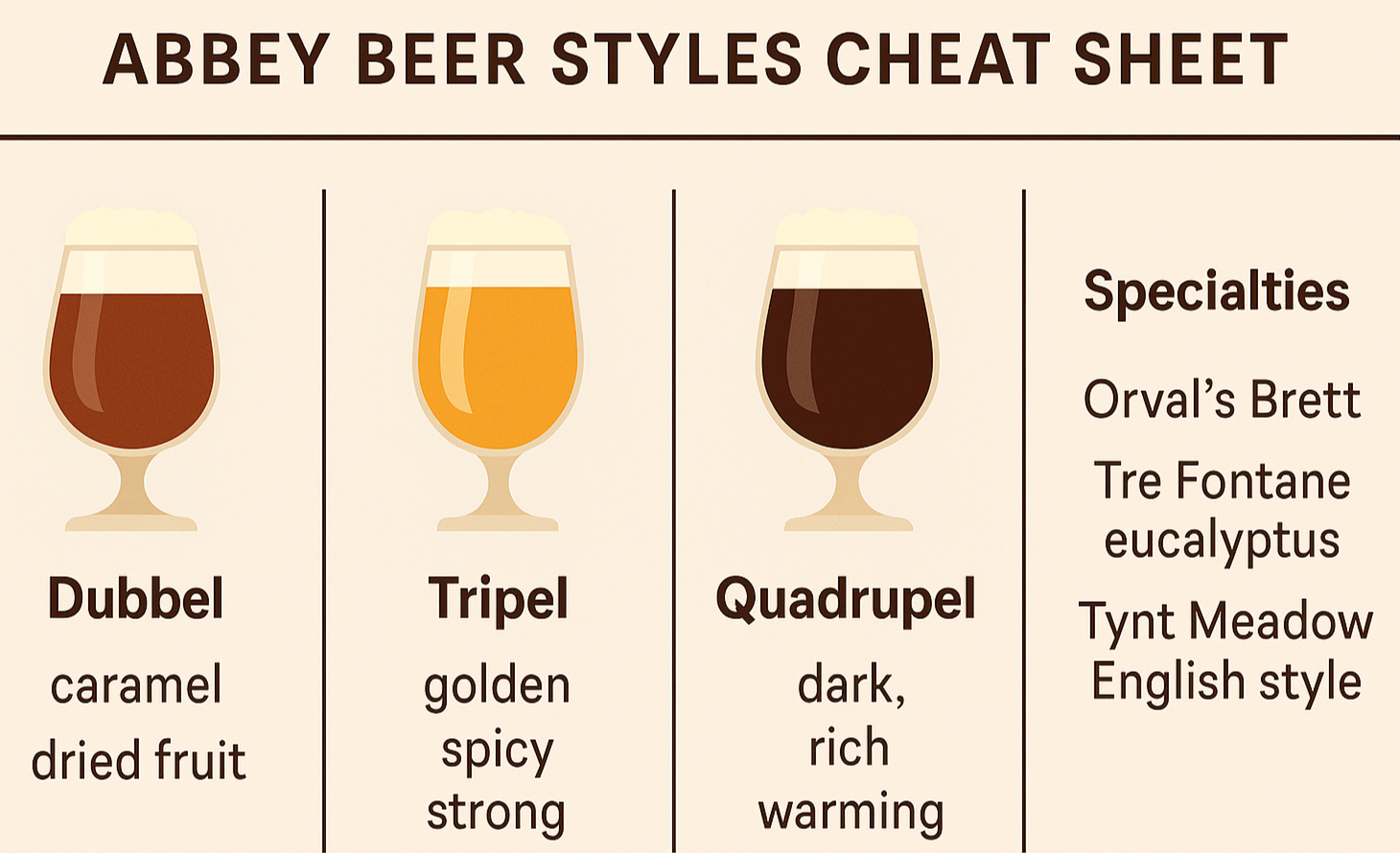
1. Westvleteren Brewery (Sint-Sixtus Abbey, Belgium)
If there is one abbey brewery that has achieved almost mythical status, it is Westvleteren, located at the quiet Sint-Sixtus Abbey in West Flanders, Belgium. Frequently ranked among the best breweries in the world, Westvleteren has built its reputation on both the extraordinary quality of its beers and the mystique that surrounds its limited availability.
A Brief History
The monks of Sint-Sixtus Abbey began brewing in the early 19th century, continuing a tradition that has endured for more than 180 years. Unlike many other breweries that expanded into global brands, the Westvleteren monks chose a different path: small-scale production focused on sustaining the abbey community. Their motto, “We brew beer to live, not live to brew,” reflects their commitment to balance between monastic life and brewing excellence.
The Beers of Westvleteren
The brewery produces just three beers, yet each is legendary in its own right:
- Westvleteren Blond (5.8%) – crisp, golden, and refreshing, often overshadowed by its stronger siblings but beloved by locals.
- Westvleteren 8 (8%) – a rich, dark Dubbel with notes of caramel, dark fruit, and spice.
- Westvleteren 12 (10.2%) – often hailed as “the best beer in the world.” A dark Quadrupel bursting with flavors of fig, raisin, chocolate, and a velvety, warming finish.
What makes these beers even more special is that they are bottle-conditioned, allowing them to develop remarkable complexity with age.
Travel Tips for 2025
Visiting Westvleteren is not as simple as walking into a shop. The monks limit production to around 60,000 cases per year, and buyers must reserve beer in advance through an official online system. Each vehicle is limited to a set number of crates, and resale is strongly discouraged.
For those who don’t secure a reservation, the In de Vrede café, located next to the abbey, serves Westvleteren beers alongside traditional Belgian fare. It’s one of the few public places where these world-class beers can be enjoyed legally and fresh.
Tip: Combine your visit with a trip to nearby Ypres and the Flanders Fields memorials, making it both a cultural and beer-focused journey.
2. Chimay Brewery (Scourmont Abbey, Belgium)
If Westvleteren embodies mystique, Chimay represents global recognition. Brewed at Scourmont Abbey in the Belgian countryside, Chimay is one of the most famous and widely available Trappist beer brands in the world. Despite its reach, the brewery remains firmly rooted in monastic tradition, making it a must-visit destination for beer lovers in 2025.
A Brief History
The monks of Scourmont Abbey began brewing in 1862, transforming a poor and remote region of southern Belgium into a thriving hub of agriculture and craftsmanship. Over time, Chimay evolved into a powerhouse of Trappist brewing while still following the core monastic principles: brewing within the abbey walls, under the supervision of monks, with profits dedicated to the abbey’s upkeep and charitable works.
The Beers of Chimay
Chimay’s range is both iconic and accessible, with each beer distinguished by its color-coded cap:
- Chimay Rouge (Red Cap, 7%) – a Dubbel with caramel sweetness, dried fruit, and a malty backbone.
- Chimay Bleue (Blue Cap, 9%) – a dark, rich Quadrupel with notes of plum, cocoa, and warming spices. A classic winter favorite.
- Chimay Blanche (Triple, 8%) – a golden Tripel with spicy yeast character, citrus zest, and a dry finish.
- Chimay Dorée (4.8%) – a lighter, refreshing session beer once reserved only for the monks themselves, now available to the public.
Chimay is also unique for pairing its beers with artisanal Trappist cheese, produced using milk from the abbey’s own dairy farm. The pairing of Chimay Blue with Chimay cheese washed in the same beer is legendary among food lovers.
Travel Tips for 2025
Visitors to Scourmont Abbey can enjoy a full Chimay Experience. The modern Espace Chimay visitor center includes interactive exhibits, a tasting room, and guided tours of the brewery and cheese dairy. There’s even a Chimay-themed inn nearby, making it easy to extend your stay.
For those planning beer pilgrimages in Belgium, Chimay is an accessible stop with excellent infrastructure, perfect for combining with other Trappist abbeys.
Can’t make it to Belgium? You can still order Chimay Blue from Beers of Europe to enjoy an authentic abbey taste at home.”
3. Orval Abbey Brewery (Belgium)
Among the world’s Trappist breweries, Orval stands out as one of the most distinctive. Nestled in the Gaume region of southern Belgium, Abbaye Notre-Dame d’Orval produces just one beer — yet that single creation has earned it global acclaim and a devoted following. For many beer lovers, visiting Orval is a pilgrimage to taste a truly one-of-a-kind ale at its source.
A Brief History
Orval Abbey dates back to the 11th century, though its brewing tradition was revived in the 1930s after centuries of destruction and rebuilding. The modern brewery was founded with the support of both the monastic community and skilled Belgian brewers, creating a beer that would become instantly iconic. Today, Orval remains a proud member of the Authentic Trappist Product family, with all profits directed toward maintaining the abbey and charitable works.
The Beer of Orval
Unlike most Trappist abbeys, Orval brews only one beer, the legendary Orval Trappist Ale (6.2%). This amber-hued, dry-hopped ale is renowned for its complexity, balance, and unique fermentation process.
What makes Orval truly special is its use of Brettanomyces yeast, a wild strain that continues to evolve in the bottle over time. Fresh Orval delivers bright citrus, floral hops, and a crisp finish, while aged bottles develop earthy, leathery, and funky characteristics beloved by beer connoisseurs.
The beer is traditionally served in its iconic tulip-shaped chalice glass, which showcases its effervescence and thick, rocky head.
Travel Tips for 2025
Visiting Orval offers more than beer. The abbey grounds include the picturesque ruins of the medieval monastery, beautifully preserved and open to the public. There’s also a visitor center and museum, detailing the abbey’s history and brewing methods.
The nearby Orval café serves fresh pours of the brewery’s famous ale, paired with the abbey’s own Orval cheese, which is washed in the beer for a harmonious flavor match. For beer travelers, this combination of history, architecture, and authentic brewing makes Orval a top destination.
Can’t visit Belgium right now? Order Orval Trappist Ale and experience its evolving Brett character at home.
4. Rochefort Brewery (Abbaye Notre-Dame de Saint-Rémy, Belgium)
If there’s a word that defines Rochefort, it’s intensity. Brewed at the Abbaye Notre-Dame de Saint-Rémy, near the town of Rochefort in Belgium’s Ardennes, these Trappist ales are renowned for their deep, complex flavors and warming strength. For lovers of strong, contemplative beers, Rochefort is an essential stop on any abbey beer journey.
A Brief History
Monastic brewing at Saint-Rémy dates back to the late 16th century, though the abbey itself has origins as far back as 1230. The current brewery was reestablished in the 19th century and has remained a cornerstone of Trappist brewing ever since. Unlike some abbeys that diversified, Rochefort has always kept its production small and focused, prioritizing quality over quantity.
The Beers of Rochefort
Rochefort produces just three beers, each numbered according to its original gravity (a measure of fermentable sugars before fermentation):
- Rochefort 6 (7.5%) – the rarest of the three, a reddish-brown ale with caramel, spice, and subtle fruit notes.
- Rochefort 8 (9.2%) – the most popular, offering layers of dark fruit, chocolate, and peppery yeast spice.
- Rochefort 10 (11.3%) – a world-class Quadrupel, rich with flavors of plum, fig, tobacco, and warming alcohol.
All three are bottle-conditioned and develop beautifully with age, making them prized by collectors and connoisseurs alike.
Travel Tips for 2025
The abbey itself is a working monastery, and unlike Chimay or La Trappe, Rochefort is not designed for large-scale tourism. Visitors cannot tour the brewery, but the surrounding Ardennes region offers stunning landscapes perfect for hiking or cycling, making a Rochefort pilgrimage rewarding in more ways than one.
For tastings, the town of Rochefort has several cafés and shops where you can sample the beers fresh. Many visitors pair their trip with stops at other Belgian Trappist abbeys, creating a beer trail through southern Belgium.
Bring the depth of Rochefort 10 to your glass — shop Rochefort Trappist ales online.
5. Westmalle Brewery (Belgium)
Known as the birthplace of the Tripel, Westmalle Abbey Brewery holds a special place in the history of Belgian beer. Located just outside Antwerp, Westmalle combines centuries of tradition with global influence — their beers have become benchmarks for styles that are now brewed worldwide.
A Brief History
The Trappist monks of Abbaye du Sacré-Cœur de Westmalle began brewing in 1836. Originally, the beers were brewed solely for the monks’ consumption, but by 1856, they introduced a stronger dark ale that became the foundation for what we now know as the Dubbel. In 1934, they created the first-ever Tripel, establishing a style that would inspire countless breweries across Belgium and beyond. Today, Westmalle remains one of the most influential abbeys in brewing history.
The Beers of Westmalle
Westmalle keeps its lineup intentionally small, focusing on perfecting three classics:
- Westmalle Dubbel (7%) – deep brown with notes of caramel, dried fruit, and spice. Smooth yet complex.
- Westmalle Tripel (9.5%) – golden, effervescent, and strong, with flavors of pear, banana, clove, and a dry, hoppy finish. Widely regarded as the original and definitive Tripel.
- Westmalle Extra (4.8%) – a lighter golden ale, once reserved for monks but now available in limited quantities to the public.
Each beer is bottle-conditioned, allowing them to age gracefully and develop nuanced flavors over time.
Travel Tips for 2025
While the abbey itself remains closed to the public, visitors can enjoy the beers at the Café Trappisten, located across from the monastery gates. The café offers the full Westmalle lineup, perfectly poured in their signature chalice glass, along with regional dishes.
Westmalle is conveniently located just 25 km from Antwerp, making it an easy day trip for travelers exploring northern Belgium. Combine your visit with a stop in Antwerp’s historic beer cafés for a well-rounded Belgian beer adventure.
Discover the birthplace of the Tripel — order Westmalle Dubbel and Tripel online and taste the originals.
6. La Trappe Brewery (Koningshoeven Abbey, Netherlands)
Not all legendary abbey breweries are Belgian. Just across the border in the Netherlands, La Trappe has established itself as one of the world’s most respected Trappist breweries. Brewed at Koningshoeven Abbey near Tilburg, La Trappe combines traditional monastic brewing values with modern innovation, making it one of the most diverse and traveler-friendly abbey breweries to visit in 2025.
A Brief History
The abbey was founded in 1881 by French Trappist monks seeking refuge from political turmoil. Almost immediately, they began brewing beer to sustain their community. Over time, La Trappe grew into the first Trappist brewery outside Belgium and remains one of the most internationally recognized abbey brands. Unlike some of its more reserved counterparts, La Trappe embraces outreach, offering visitors tours, tastings, and even sustainability initiatives.
The Beers of La Trappe
La Trappe offers one of the widest Trappist portfolios, with beers ranging from sessionable ales to powerful Quadrupels:
- La Trappe Blond (6.5%) – golden, fruity, and balanced.
- La Trappe Dubbel (7%) – dark and malty with caramel and raisin notes.
- La Trappe Tripel (8%) – a strong, golden ale with spicy yeast and a dry finish.
- La Trappe Quadrupel (10%) – a pioneering beer that helped popularize the Quadrupel style, rich with dark fruit and warming alcohol.
- La Trappe Isid’or (7.5%) – brewed in honor of the abbey’s founder, Brother Isidorus.
- La Trappe Nillis (0.0%) – a non-alcoholic Trappist beer, showcasing the abbey’s modern innovation.
This wide range ensures that visitors can explore almost every classic Trappist style in one place.
Travel Tips for 2025
La Trappe is among the most visitor-friendly abbey breweries. Guests can take guided tours of the brewery, visit the abbey shop, and enjoy a meal at the on-site café, which pairs La Trappe beers with local dishes. The abbey also emphasizes sustainability, using water purification systems and renewable energy in its brewing process — something increasingly valued by today’s travelers.
Located just outside Tilburg, La Trappe is easy to reach by train or car, making it an excellent stop for beer enthusiasts touring the Netherlands.
Taste the full range of styles from Blond to Quadrupel — explore La Trappe beers here
7. Stift Engelszell (Austria)
Austria may be better known for lagers and alpine brewing traditions, but Stift Engelszell has carved out a unique place in Trappist history. Located along the Danube River in Upper Austria, it is the country’s only Trappist brewery — and one of the few outside Belgium and the Netherlands to carry the Authentic Trappist Product label.
A Brief History
The Engelszell Abbey was founded in the 13th century, though its Trappist brewing tradition is relatively recent. After centuries of upheaval and secularization, Trappist monks from Belgium reestablished the monastery in the 1920s. In 2012, the abbey officially began brewing beer, joining the ranks of the world’s recognized Trappist breweries. Despite being a newcomer compared to centuries-old Belgian abbeys, Engelszell quickly earned international respect for both quality and authenticity.
The Beers of Stift Engelszell
Engelszell is known for combining traditional Trappist styles with Austrian flair. Some of its standout beers include:
- Gregorius (9.7%) – a dark Quadrupel brewed with local honey, offering rich flavors of molasses, dried fruit, and warming alcohol.
- Benno (6.9%) – an amber ale named after a former abbot, with caramel malt and a touch of floral hops.
- Nivard (5.5%) – a light, refreshing session ale with herbal and citrus notes, perfect for summer.
- Triga (9%) – a stronger ale that blends Trappist tradition with regional brewing character.
What sets Engelszell apart is its focus on local ingredients, including Austrian honey and regional hops, making its beers uniquely tied to place.
Travel Tips for 2025
Stift Engelszell is located in a stunning natural setting along the Danube Valley, making it a great stop for travelers exploring Austria’s scenic landscapes. The abbey itself is famous for its Rococo church, with ornate frescoes and architecture that rival its beer in beauty.
Visitors can taste Engelszell beers in nearby cafés or purchase bottles from local shops. While the brewery itself does not run large-scale tours, its location makes it a picturesque and rewarding detour for beer enthusiasts traveling through Central Europe.
8. Spencer Trappist Brewery (Massachusetts, USA)
While Europe has long been the home of abbey brewing, the United States made history in 2013 when the Spencer Trappist Brewery, located at St. Joseph’s Abbey in Spencer, Massachusetts, became the first Trappist brewery outside Europe. This milestone proved that monastic brewing traditions could thrive in the New World, and Spencer quickly gained recognition among beer enthusiasts worldwide.
A Brief History
The monks of St. Joseph’s Abbey had long supported their community by producing jams and preserves, but in the early 2010s they sought a sustainable new venture. After visiting Belgian Trappist breweries for guidance, they built a state-of-the-art facility and launched Spencer Trappist Ale. Their mission mirrored that of their European counterparts: brewing not for profit, but to support the abbey and its charitable works.
Although the brewery ceased large-scale operations in 2022 due to declining sales, Spencer beers remain part of Trappist brewing history, and bottles are still sought after by collectors and pilgrims. Some limited availability and legacy projects continue to keep the Spencer story alive in 2025.
The Beers of Spencer
Spencer brewed a wide range of monastic-inspired beers, including:
- Spencer Trappist Ale (6.5%) – a golden Belgian-style ale with fruity yeast character and a crisp finish.
- Spencer Trappist Holiday Ale (9%) – a seasonal strong ale with warming spices, brewed for Christmas.
- Spencer Trappist Imperial Stout (8.7%) – a dark, rich stout with roasted malt and chocolate notes.
- Spencer Peach Saison (4.5%) – an American twist on farmhouse brewing, light and fruity.
These beers showcased how Trappist brewing could adapt to American tastes while staying true to tradition.
Travel Tips for 2025
Although production has scaled back, St. Joseph’s Abbey remains a beautiful and spiritual destination in Massachusetts. Visitors can explore the abbey grounds, purchase artisanal jams, and learn about the monks’ history of work and prayer. While Spencer beers are no longer widely available, the story of America’s only Trappist brewery remains an essential chapter in abbey brewing history.
9. Tre Fontane Abbey (Rome, Italy)
In the heart of Rome, surrounded by ancient ruins and Christian history, lies Abbazia delle Tre Fontane, one of the most unusual Trappist breweries in the world. While Belgium and the Netherlands dominate the abbey beer scene, Tre Fontane has earned its place among the legendary Trappist names thanks to its distinctive brewing approach and deep historical roots.
A Brief History
The abbey’s history stretches back nearly 1,600 years, with traditions linking it to the martyrdom of St. Paul. For centuries, the monks supported themselves through farming and crafts. In the late 19th century, they began distilling eucalyptus liqueurs as a remedy against malaria, using trees planted around the abbey. Building on that tradition, they eventually turned to brewing, creating a Trappist beer that incorporated the same aromatic ingredient.
In 2015, Tre Fontane officially received the Authentic Trappist Product (ATP) designation, becoming the first Italian abbey brewery recognized with this prestigious label.
The Beer of Tre Fontane
Tre Fontane produces a truly distinctive beer:
- Tre Fontane Tripel (8.5%) – a golden Tripel brewed with eucalyptus leaves, offering a spicy, herbal character balanced by fruity esters and warming alcohol.
This unique recipe sets Tre Fontane apart from every other Trappist brewery, making it a must-try for adventurous beer lovers. The eucalyptus not only adds complexity but also connects the beer directly to the abbey’s history and landscape.
Travel Tips for 2025
A visit to Tre Fontane is unlike any other abbey beer pilgrimage. The abbey complex includes three historic churches, serene gardens, and a shop selling both the beer and the monks’ traditional liqueurs, oils, and chocolates. The site is just a short distance from central Rome, making it easy to combine a beer pilgrimage with visits to the Colosseum, the Vatican, and other iconic landmarks.
For travelers in Italy, Tre Fontane offers the rare chance to enjoy an authentic Trappist beer experience without leaving the Eternal City.
10. Mount Saint Bernard Abbey (Leicestershire, UK)
The UK has long been a land of cask ales and bitters, but in 2018 it made history when Mount Saint Bernard Abbey, located in the rolling hills of Leicestershire, became home to the country’s first Trappist brewery. Their beer, Tynt Meadow, is not only a milestone for British brewing but also a remarkable expression of how monastic traditions can blend with local beer culture.
A Brief History
Founded in 1835, Mount Saint Bernard Abbey was the first permanent monastery built in England since the Reformation. For generations, the monks lived self-sufficiently through farming and manual labor, but as agriculture became less sustainable, they sought a new way to support their community. After studying brewing at Belgian abbeys, they established their own small-scale brewery, ensuring that profits would go back into sustaining the abbey and its charitable missions.
The Beer of Mount Saint Bernard
Unlike Belgian abbeys that brew multiple styles, Mount Saint Bernard focuses entirely on a single, unique beer:
- Tynt Meadow (7.4%) – a dark, strong ale brewed in the English tradition, with rich malt character, notes of chocolate and licorice, and a subtle fruity yeast profile.
Brewed and bottled on-site, Tynt Meadow is bottle-conditioned and designed to age gracefully. It represents a distinctly English interpretation of Trappist beer, setting it apart from continental counterparts while staying true to the values of authenticity and simplicity.
Travel Tips for 2025
Visiting Mount Saint Bernard Abbey is a serene and inspiring experience. The abbey itself is nestled in the Charnwood Forest, offering peaceful walking trails and a retreat-like atmosphere. The monks sell Tynt Meadow directly from their shop, along with books, religious items, and artisanal products. While the brewery is not open for public tours, simply tasting Tynt Meadow at its source is a highlight for beer enthusiasts.
For beer travelers exploring the UK, Mount Saint Bernard offers a unique chance to connect with the global Trappist tradition while experiencing an authentic slice of English brewing heritage.
Top 10 Legendary Abbey Breweries in 2025
| Abbey Brewery | Location | Signature Beer(s) | Unique Feature | Visitor Experience 2025 |
|---|---|---|---|---|
| Westvleteren (Sint-Sixtus Abbey) | West Flanders, Belgium | Westvleteren 12 (Quadrupel) | Famously rare, often called the best beer in the world | Strict reservation system, beers available at In de Vrede café |
| Chimay (Scourmont Abbey) | Hainaut, Belgium | Chimay Blue, Chimay Red, Chimay Tripel | Large range + famous Trappist cheese | Full visitor center, museum, guided tours, Chimay-themed inn |
| Orval Abbey | Gaume, Belgium | Orval Trappist Ale | Dry-hopped, Brettanomyces yeast, ages beautifully | Historic abbey ruins, museum, café serving Orval cheese |
| Rochefort (Abbaye Notre-Dame de Saint-Rémy) | Ardennes, Belgium | Rochefort 6, 8, 10 | Strong dark ales with rich depth | Limited tourism, best enjoyed in town cafés and regional beer trails |
| Westmalle | Antwerp, Belgium | Westmalle Tripel (the original Tripel) | Invented both Dubbel and Tripel styles | Café Trappisten across from abbey gates |
| La Trappe (Koningshoeven Abbey) | Tilburg, Netherlands | La Trappe Quadrupel, Blond, Dubbel | First Trappist brewery outside Belgium; wide beer range | Visitor-friendly: tours, café, abbey shop, sustainability focus |
| Stift Engelszell | Upper Austria, Austria | Gregorius (Quadrupel with honey) | Austria’s only Trappist brewery | Stunning Danube Valley location, Rococo church, local cafés |
| Spencer Trappist Brewery (St. Joseph’s Abbey) | Massachusetts, USA | Spencer Trappist Ale, Imperial Stout | First Trappist brewery outside Europe | Brewery no longer active, but abbey visitable; historic significance |
| Tre Fontane Abbey | Rome, Italy | Tre Fontane Tripel (with eucalyptus) | Only Trappist beer brewed with eucalyptus | Easy Rome access, abbey shop, liqueurs, chocolates, historic churches |
| Mount Saint Bernard Abbey | Leicestershire, UK | Tynt Meadow (dark ale) | First UK Trappist beer, English style | Peaceful abbey shop, Charnwood Forest walks, limited access brewery |
Tips for Visiting Abbey Breweries in 2025
Exploring abbey breweries isn’t like visiting a typical bar or craft brewery. These are working monasteries, where brewing is intertwined with spiritual life, history, and culture. If you’re planning an abbey beer pilgrimage in 2025, here are essential tips to make the most of your journey.
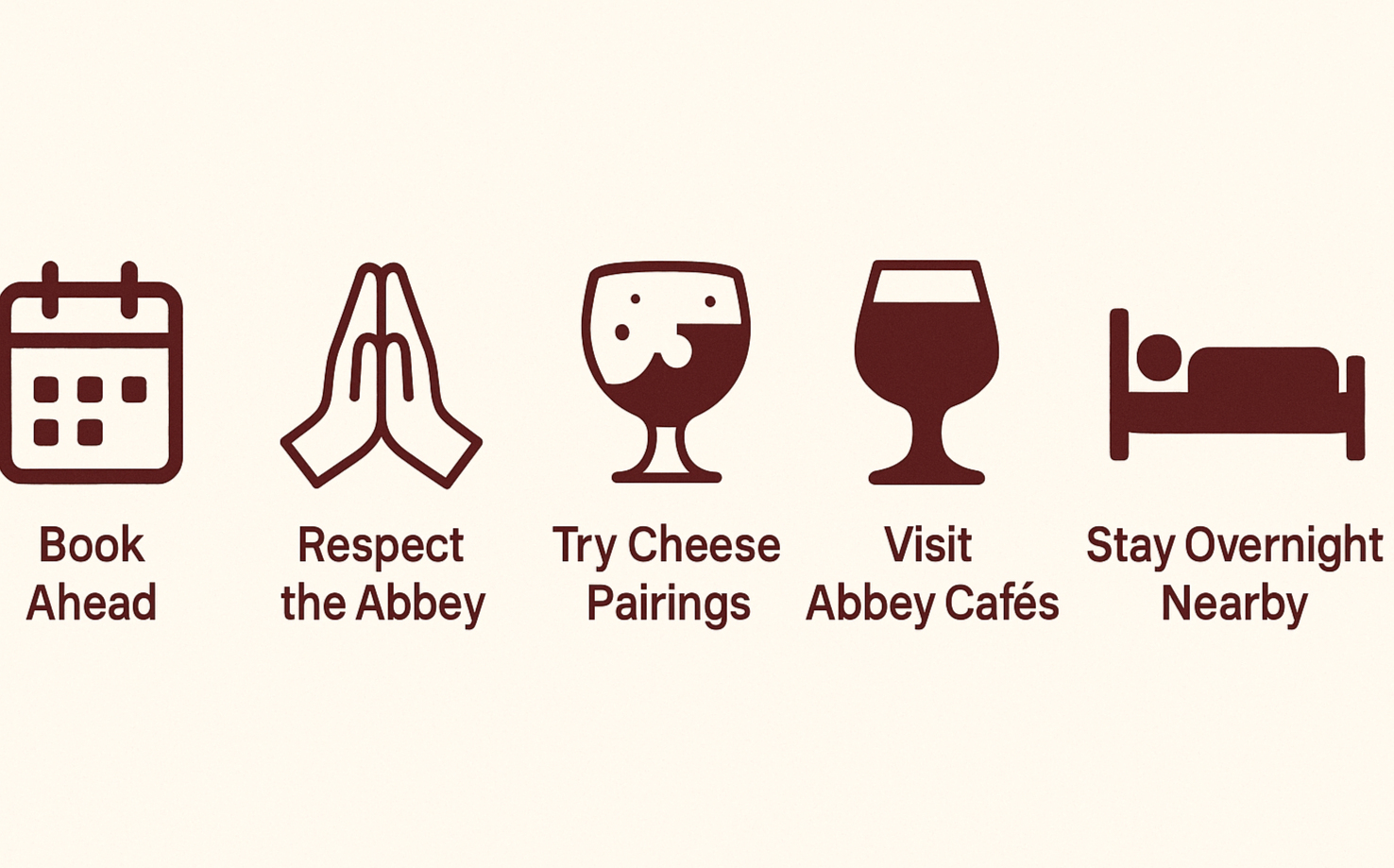
“Bring a proper Trappist chalice glass — available on Amazon — to recreate the abbey experience at home.”
1. Plan Ahead and Respect Availability
Many abbey breweries — especially Westvleteren — have strict reservation systems or limited availability. Beers are brewed in small quantities, and access may be restricted. Always check the official websites before your visit to confirm opening hours, reservation policies, and availability. For popular abbeys like Chimay or La Trappe, advanced bookings for tours are highly recommended.
2. Respect the Monastic Environment
Abbeys are not theme parks; they are active religious communities. Visitors should dress modestly, maintain a respectful tone, and remember that access to certain areas may be restricted. Photography is often limited in sacred spaces, so always ask before snapping pictures. Think of your visit as entering a place of peace as well as beer heritage.
3. Explore Beyond the Beer
Abbey breweries are cultural treasures, often located in breathtaking surroundings. For example:
- Orval features picturesque medieval ruins.
- Mount Saint Bernard offers walking trails in Charnwood Forest.
- Tre Fontane in Rome sits among historic churches and Roman heritage.
Take time to enjoy the history, architecture, and natural landscapes that surround these abbeys — the beer is just one part of the experience.
4. Taste the Food Pairings
Many abbeys produce more than beer. Chimay is famous for its Trappist cheeses, Orval makes beer-washed cheese, and Tre Fontane sells liqueurs and chocolates. Pairing these foods with the abbey’s beers enhances the experience and helps you understand the monks’ holistic approach to craftsmanship.
5. Use Abbey Cafés and Shops
Since brewery tours are often limited, the best way to taste abbey beers is in the abbey cafés or shops. Westmalle’s Café Trappisten, Chimay’s visitor center, and Orval’s abbey café all offer fresh pours in the proper glassware. Buying directly from abbeys or their official shops also supports their monastic communities and charitable works.
6. Combine Beer with Travel Itineraries
Abbey breweries are often near cultural landmarks or scenic routes, making them perfect additions to broader travel plans. For example:
- Combine Westvleteren with a trip to Ypres and Flanders Fields.
- Pair a visit to Tre Fontane with Rome’s Colosseum or Vatican.
- Add Stift Engelszell to a Danube cycling tour.
This transforms your beer trip into a richer cultural journey.
7. Be Open to Local Variations
While many abbeys brew classic Dubbel, Tripel, and Quadrupel styles, some offer unique twists. Tre Fontane uses eucalyptus leaves, La Trappe makes a non-alcoholic Trappist beer, and Mount Saint Bernard produces a distinctly English-style dark ale. Don’t just look for the famous bottles — try the local specialties to expand your palate.
8. Support Monastic Communities Responsibly
When you purchase abbey beers, food, or souvenirs, you’re supporting communities that dedicate their lives to prayer, sustainability, and charity. Your visit helps preserve centuries of tradition while ensuring these abbeys can continue their work into the future.
If you want to dive deeper, check out classic books on Trappist beer
Quick Travel Checklist for Abbey Brewery Visits
- ✅ Check abbey websites for opening times & reservations.
- ✅ Dress modestly and act respectfully.
- ✅ Visit abbey cafés or shops for tastings.
- ✅ Explore abbey grounds, churches, and surrounding landscapes.
- ✅ Try beer-and-cheese pairings for a fuller experience.
- ✅ Combine abbey visits with cultural or historical sites nearby.
Looking for a guided experience? Book a Belgian Trappist Beer Tour on Viator and visit several abbeys in one trip.
For more inspiration on planning your trip, check out the official Belgian Beer Tourism Guide for routes and experiences, or explore the International Trappist Association Visitor Information to learn more about abbey breweries worldwide.
Why Abbey Beers Are Still Relevant in 2025
In a world where craft beer trends change almost overnight — hazy IPAs one year, pastry stouts the next — you might wonder why abbey beers remain such a cornerstone of global beer culture. Yet in 2025, these monastic brews are as significant as ever, offering a counterbalance to constant innovation with their authenticity, tradition, and timeless appeal.
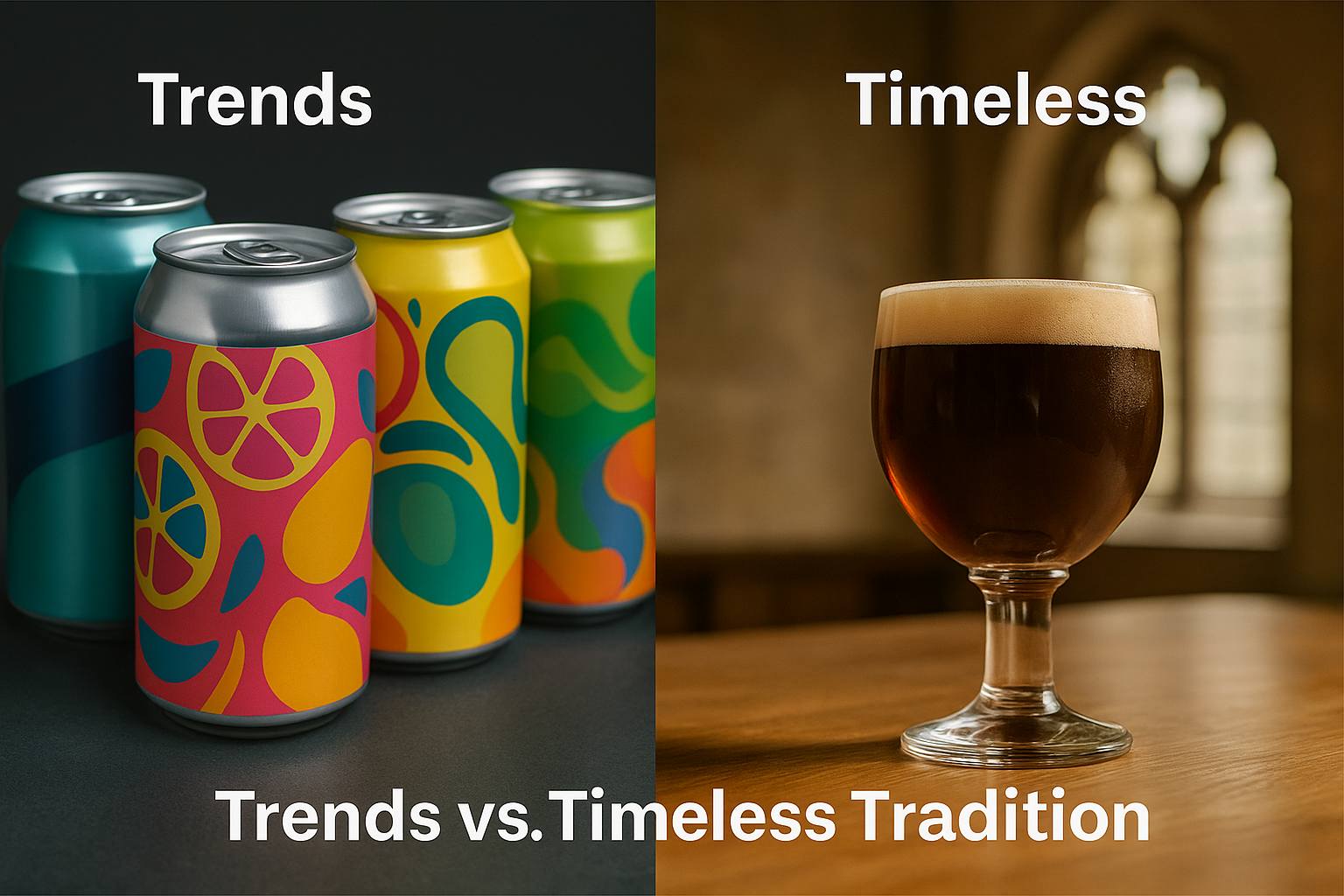
1. Centuries of Proven Tradition
Abbey beers connect drinkers to a brewing tradition that spans centuries. While most modern breweries are only a few decades old, abbeys like Westmalle, Chimay, and Orval have brewed continuously for generations. This longevity inspires trust — beer lovers know these recipes have stood the test of time. In an industry where hype can fade quickly, consistency is a mark of true excellence.
2. Authenticity in an Age of Hype
Today’s craft beer market is flooded with flashy cans, creative labels, and experimental adjuncts. While fun, these beers often chase novelty. Abbey breweries, on the other hand, emphasize substance over style. Their beers don’t rely on gimmicks — they rely on centuries-old techniques, bottle conditioning, and strict quality standards like the Authentic Trappist Product (ATP) designation. For drinkers craving something real, abbey beers embody authenticity.
3. Balance of Flavor and Strength
Abbey beers also remain relevant because of their balance. From the caramel richness of a Dubbel to the dry spiciness of a Tripel, these beers are complex without being overwhelming. Even the strongest abbey ales, like Rochefort 10 or Westvleteren 12, are crafted for drinkability, with carefully layered flavors that appeal to both experts and newcomers.
4. Global Appeal and Accessibility
While some abbeys (like Westvleteren) are famously hard to access, others such as Chimay and La Trappe ensure their beers are widely available worldwide. This combination of local mystique and global accessibility allows abbey beers to reach diverse audiences, from casual drinkers at home to travelers planning full beer pilgrimages. In 2025, this duality keeps abbey beers both aspirational and approachable.
5. Cultural and Spiritual Connection
Abbey beers are not just drinks — they are part of a broader cultural and spiritual heritage. Monastic brewing is rooted in “Ora et Labora” (pray and work), meaning that beer supports both the livelihood of monks and their charitable missions. In a time when consumers increasingly value products with purpose and sustainability, abbey beers resonate with ethical drinkers. Supporting abbey breweries means supporting communities dedicated to peace, charity, and cultural preservation.
6. Relevance in Modern Beer Culture
Far from being relics, abbey breweries are adapting to modern needs. La Trappe produces non-alcoholic beers, addressing changing consumer habits. Tre Fontane experiments with local ingredients like eucalyptus. Even Mount Saint Bernard Abbey in the UK created a uniquely English Trappist ale, proving abbey brewing can honor tradition while embracing local identity. This flexibility ensures abbey beers stay meaningful in a rapidly evolving market.
Why Are Abbey Beers Still Important in 2025?
Abbey beers remain relevant because they combine authentic history, timeless flavors, ethical production, and global accessibility — offering a unique drinking experience that transcends trends.
If you want to dive deeper into what makes these brews authentic, explore the Authentic Trappist Product standards from the International Trappist Association. And for a taste of how abbey beers connect to food culture, discover the classic Chimay beer & cheese pairings that showcase monastic craftsmanship at its best.”
Conclusion: A Timeless Journey Through Abbey Brewing
From the hallowed walls of Westvleteren to the innovative flavors of Tre Fontane and the quiet English charm of Mount Saint Bernard, the world’s abbey breweries represent more than just beer. They embody centuries of history, craftsmanship, and spiritual devotion, offering flavors that transcend trends and connect us to something timeless.
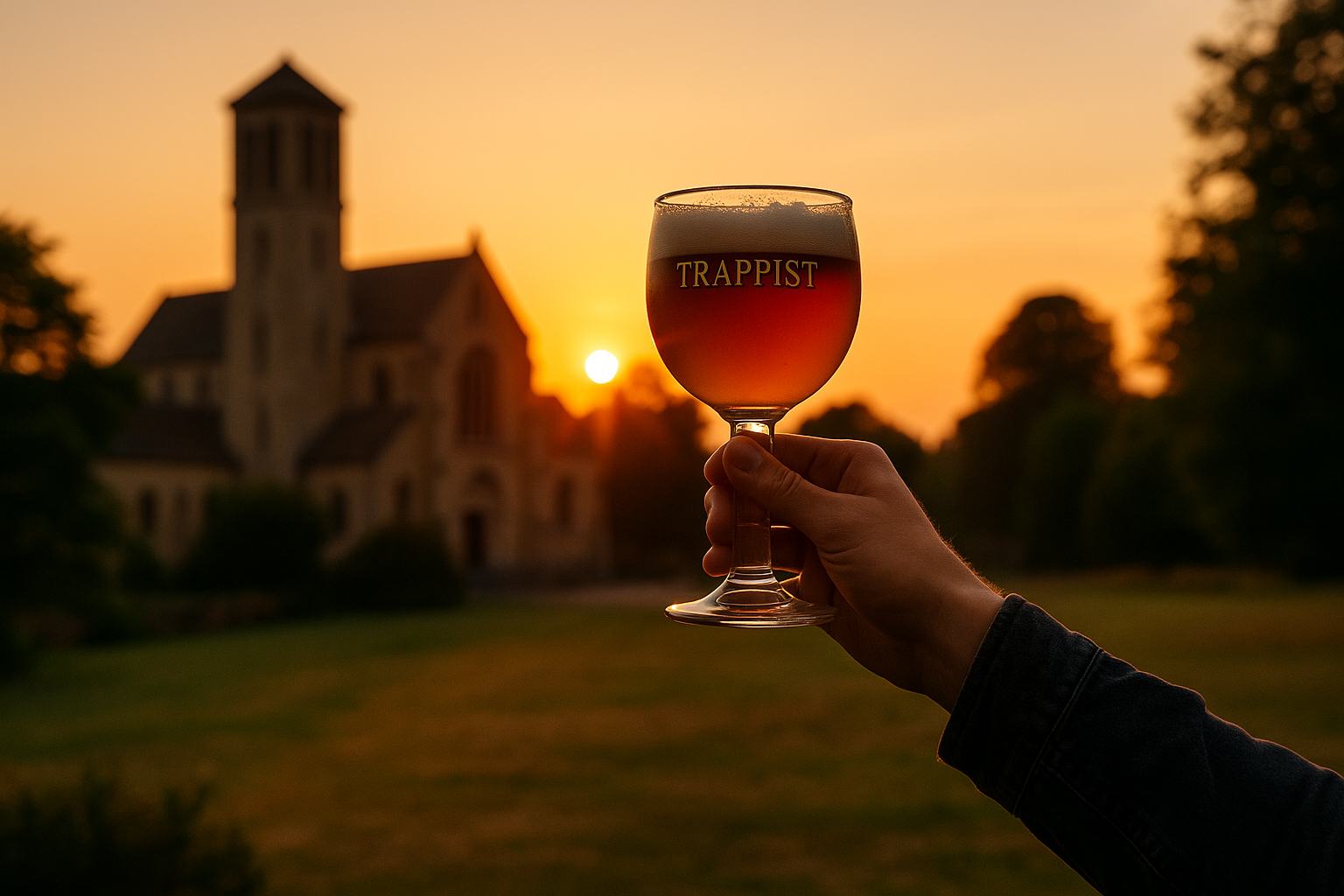
Visiting these abbeys in 2025 is more than a beer trip — it’s a cultural pilgrimage. You’ll taste beers brewed with centuries of knowledge, walk through abbeys that have survived wars and political upheaval, and experience the peace of monastic life that continues today. Whether you prefer the rare mystique of Westvleteren, the global accessibility of Chimay, or the unique eucalyptus notes of Tre Fontane, each abbey offers its own unforgettable story.
For beer enthusiasts, these Top 10 Legendary Abbey Breweries are more than destinations; they are milestones in a lifelong beer journey. Each glass is a chance to savor authenticity and tradition in a world that often moves too fast.
If you’re planning a beer pilgrimage, make abbey breweries part of your itinerary. Respect their traditions, enjoy their beers responsibly, and support their charitable work. And if you want more guides on beer culture, breweries, and travel, be sure to explore our related posts on BeerMadness.com.
👉 Ready for your next beer adventure? Discover more in our guide to the Top Beer Cities in the US 2025 and start planning your journey today.

